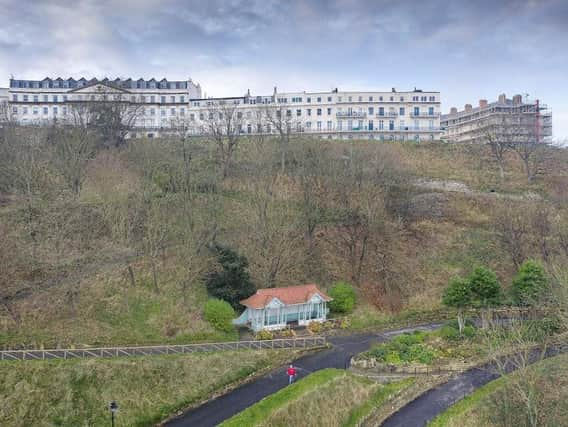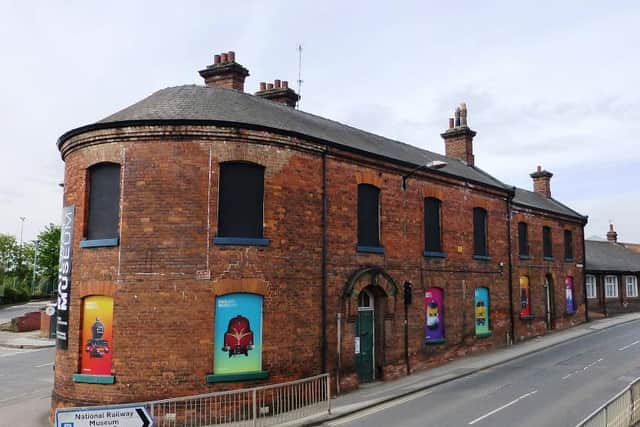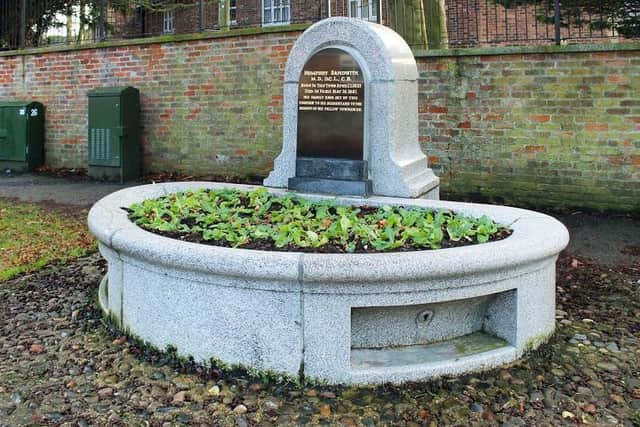Historic England reveal the newest and quirkiest Yorkshire buildings that have been listed in 2020


The 2020 register also includes quirky new entries such as a seafront shelter in Scarborough, a drinking fountain in Bridlington, World War Two pillboxes in Stokesley, and a milestone on the old Doncaster to Selby turnpike road.
York Gate Garden in Adel, near Leeds, is one of the 33 additions given Grade II listed status, as is a Quaker meeting house burial ground in Airton and the Bullnose Building at York Station, which was once the coal manager's office.
Advertisement
Hide AdAdvertisement
Hide AdThe list also features an ancient henge near Sinderby, a Methodist chapel in Doncaster, a sawmill on the Ingleborough estate in the Dales and Cruck Barn in Clapham, as well as several village war memorials.


Historic England's regional director for Yorkshire Trevor Mitchell said: "Every year, we work to identify the most significant historic sites across the country. Despite the challenges that we have all faced this year, 2020 has seen many brilliant additions to the list in Yorkshire and beyond.
"We want to ensure the region’s rich and varied cultural past is recognised so that the public can continue to enjoy the heritage that makes their local places so important."
Gawthorpe Water Tower
Gawthorpe Water Tower is a distinctive concrete structure in Wakefield that can be seen for miles around . Constructed between 1922 and 1928 as part of the nearby Pildacre Waterworks (now demolished), the tower was built to store drinking water for the expanding village of Gawthorpe, and was in use until 2006.


Advertisement
Hide AdAdvertisement
Hide AdThe water was drawn up from a former mine and pumped from the waterworks to the tower by two engines, fondly known by locals as Maud and Edith. The tower is now used to host telecommunications equipment. Its design is far more interesting than a typical water tower, with smart panelling and its rotunda shape making it aesthetically pleasing as well as functional.
Seaside shelter, South Cliff Gardens, Scarborough
The Scarborough seaside shelter, which sits within the Grade I- registered Valley Gardens and South Cliff Gardens, was built from 1897-1909. It has some unusual design details, created by eminent local architect Frank Alfred Tugwell. Shelters like these were very popular during the Victorian and Edwardian eras and would have been designed to enhance the seaside-goer’s experience. The decorative blue and white structure captures the spirit of Scarborough’s colourful history as an important seaside resort.
Lamp post dating from 1800, Richmond
The lamp post is an elegant wrought iron structure positioned on a wall at the junction of Bargate and Cornforth, near the town centre. Originally, its lamp (which is no longer present) was fuelled by oil but in 1830 it was converted to gas following the establishment of the Richmond Gasworks in 1821.
Public street lighting in the Georgian and Victorian eras was sparse by modern-day standards. The lamp post in Richmond would probably have been one of only a few in the town as widespread street lighting did not appear until the 20th century.
Advertisement
Hide AdAdvertisement
Hide AdThe lamp post’s location was most likely chosen so it would illuminate a pre-existing public drinking water point, the remnants of which are also included in the listing. Installed in 1782, this would have provided residents of the surrounding streets with fresh water.
Bullnose Building, York Station
In the 19th century the transportation of coal and other minerals was a lucrative business for the North Eastern Railway. When the company decided to build a new goods station complex in the 1870s, architect Thomas Prosser incorporated a new coal depot into the plans, together with a building to accommodate an office and housing for the coal manager. Designed by Benjamin Burleigh, who took over from Prosser, the Bullnose Building is a two-storey structure, notable for its elegant rounded corner. The interior of the office retains many of its original fixtures and fittings including the staircase and fireplace.
The Bullnose Building sits at the gateway to one of the largest city centre brownfield regeneration projects in the country, and is part of the National Railway Museum.
Sandwith Fountain, Bridlington
Born in Bridlington in 1822, Humphrey Sandwith was the chief military medical officer for the British and Turkish forces at the siege of Kars during the Crimean War. After the fall of Kars in 1855, he was the only British prisoner of war to be released immediately by the Russians, in recognition of his medical services to both allied and Russian soldiers. On his return to England in 1856, he was greeted as a war hero, and became a well-known author and political activist, as well as the Governor of Mauritius.
Advertisement
Hide AdAdvertisement
Hide AdIn 1883, Sandwith’s family erected a drinking fountain in Bridlington to commemorate his life. This public utility served as a water supply for horses and dogs until it was removed in 1964 to make way for a roundabout. In 1970, the fountain was re-erected in the town and, in 2019, it was restored with the installation of a new memorial tablet.
Comment Guidelines
National World encourages reader discussion on our stories. User feedback, insights and back-and-forth exchanges add a rich layer of context to reporting. Please review our Community Guidelines before commenting.